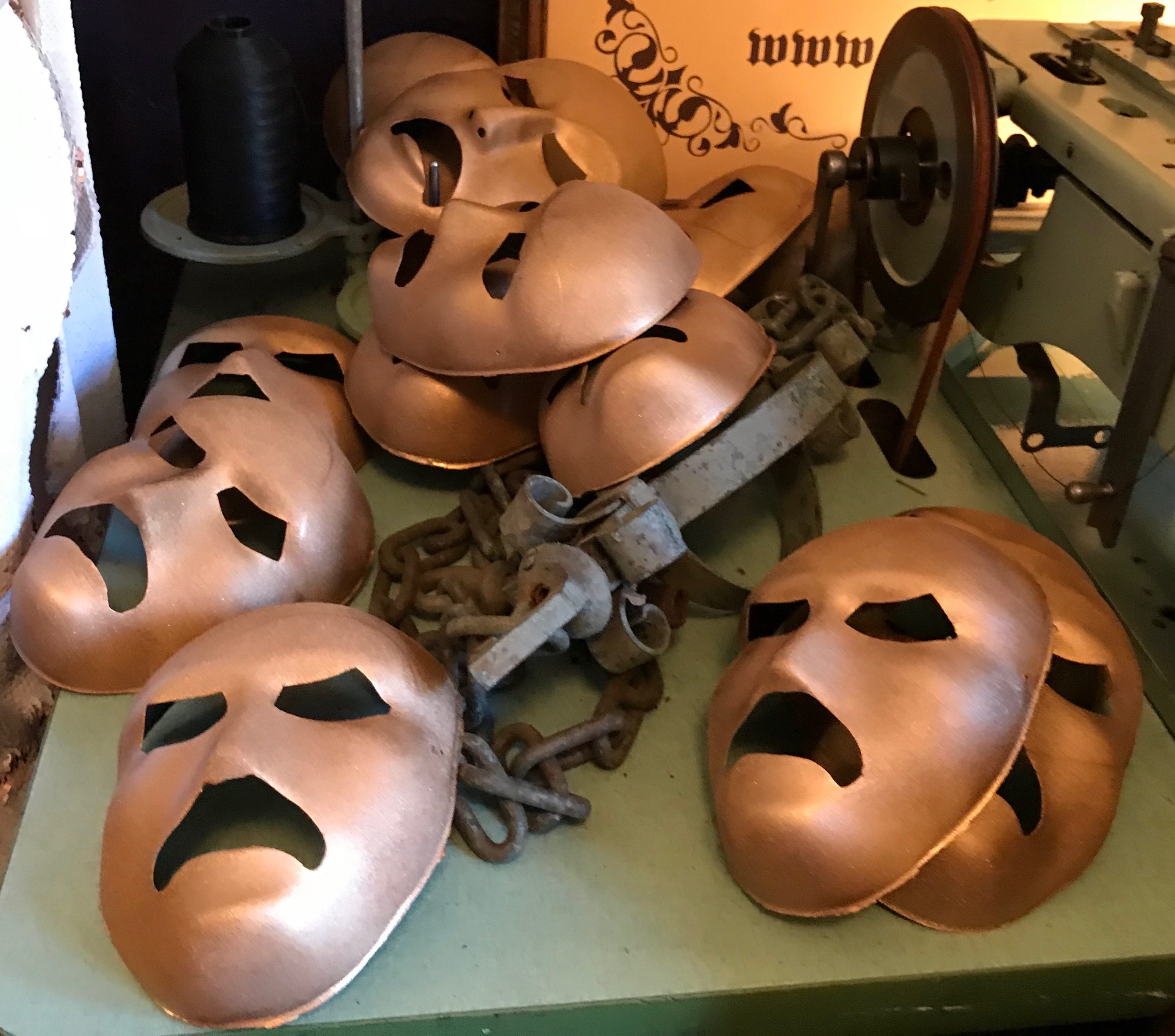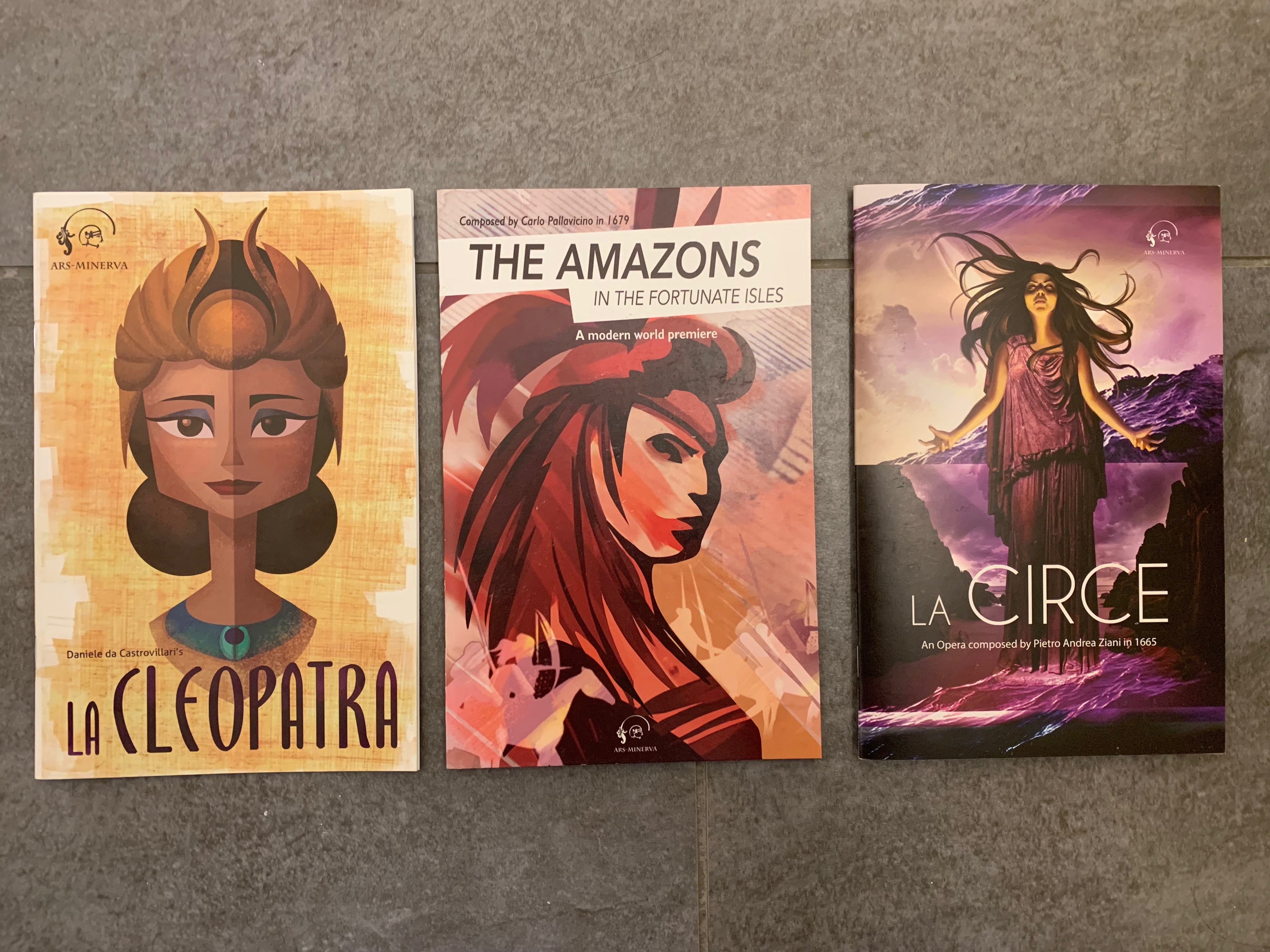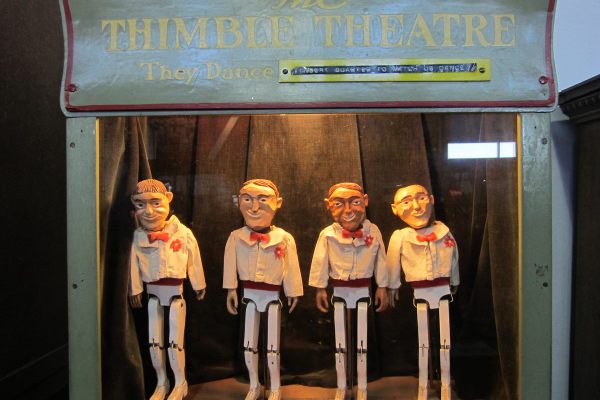A San Francisco Troupe Is Spicing Up Forgotten Baroque Operas
Expect sequins, aerialists, and LGBTQ love triangles.

Come for the giant lute. Stay for the bare-chested merman in sequins.
Such might read an ad for the San Francisco-based opera company Ars Minerva. It’s too bad that this upstart troupe, which performs forgotten opera from the Baroque period (1600 - 1750) and is now entering its fourth season, can’t afford much by way of advertising. Tag lines would abound: Come for the freshly exhumed music from the 1600s. Stay for the surtitles that use words like “Dude.” Or the prop Polaroid camera. Or the—is that an aerialist?
(Yes.)
Colorful, sprightly, youthful, sexy, these operas are confections. They were dead and buried; now they are alive.

“I say very often that it’s a human adventure,” says Céline Ricci about reviving these 17th-century works that were themselves revivals of Greek myths. Before founding and becoming and Executive and Artistic Director of Ars Minerva, Ricci had an active career as a mezzo-soprano. For a brief time before that, she was an archaeology student at the Sorbonne—fitting, given her current fascination with operatic remains. “The plots of these operas are very often from 2,000 years ago or 2,500 years ago. Then they are seen through the eyes of the 17th century. Then there is this silence of some 300 years. And then there’s us.”
The adventure isn’t just historical; it’s happening present-tense. Ars Minerva, whose name honors the Etruscan goddess of wisdom, labor, and art, can rent only one week of rehearsals in its performance venue before a production. Singers sometimes arrive not quite knowing their music. Technical support is sometimes not as experienced as it purports to be. Holes in preparedness have been discovered far too close to curtain-up time.

Take costumes. Ars Minerva’s third-season production Circe, last performed in 1665, was two weeks from its “modern-world premiere” when a 30-year veteran of the San Francisco Opera’s costume shop stumbled across an ad for volunteers that Ricci had placed on Craigslist. Matthew Nash was short on gigs and looking to network. He responded.
“This was amazing,” Ricci remembers. “I thought that he wasn’t a human being. He was sent by some forces of the universe to help us.”
“I went to meet with Céline at her apartment with the costume designer,” Nash says. “I was supposed to help finish the clothes. Well, nothing had been started at all. It was two weeks before dress rehearsal.”
In a week, Nash, who specializes in men’s costuming, patterned, cut, and made clothes for Circe’s five male characters. He also rebuilt the dress that Ricci, singing the title role, was to wear: the previous effort had been sewn into a Mobius strip. Says the draper who spent three decades making $10,000 costumes at one of the biggest opera houses in this country, “I’ve never slammed stuff out like that in my life.”

For Ifigenia in Aulis, Ars Minerva’s fourth-season production that will premiere on November 30, Nash has been promoted from Godsend to costume designer. Every room in his home-studio is currently strewn with jewel-toned fabric bolts. The costumes will pay homage to the opera’s three temporal roots. There will be Grecian masks, Baroque frocks, and a velvet drop-crotch tracksuit that summons the recent comeback of the Hammer pant.
“Like any company, there’ve been a lot of growing pains,” says conductor and harpsichordist Derek Tam with a diplomatic smile. Tam has been part of Ars Minerva since its inception, conducting the singers and a small orchestra of violins, cello, and theorbo (that aforementioned giant lute) from his keyboard. “I think that a lot of the excitement”—Ricci’s adventure is Tam’s excitement—“is just because it’s so new. We’re creating our own scripts.”
And their own musical scores. When it comes to mounting forgotten opera, the first challenge lies in the source material. The Biblioteca Marciana in Venice houses hundreds of manuscripts of forgotten opera. They are difficult to read, notated in bygone clefs and according to arcane performance practices. Complicating matters, they were hastily jotted down. Tam says you can sometimes find entire sections written in the wrong key.
To select Ars Minerva’s repertoire, Ricci pores over the library’s microfilm stacks and makes her best guess about which score will combine beautiful music with powerful story. Then they are transposed—put into contemporary musical nomenclature. Tam recently spent 100-odd hours preparing Ifigenia’s score for its re-debut.

There’s no guarantee that all that time with the fossil brush will uncover any treasure. But so far, Ars Minerva has been lucky. In Cleopatra, the company’s first production, Ricci unearthed a Cleopatra who, counter to her usual story, is given a new lease on life plus a new lover at the end. The titular Circe has a sexual appetite so ravenous and so satisfied she could make even a progressive San Franciscan blush. Then there’s the full-blown LGBTQ love triangle Ricci uncovered in The Amazons in the Fortunate Isles. The “feminine” male Numidio and the “masculine” female Auralba both lust after Florinda, who is bisexual.
“A plot in 1680 dealing with lesbians and it’s okay—that’s pretty awesome,” says Tam.
Ars Minerva’s staging was steamy. And not just for steaminess’s sake, it turns out. The romance scenes defibrillate what was until then a dusty musical score decaying on a shelf.
“Maybe I have something about death,” Ricci wonders with a laugh.
Maybe she does. For Ricci, Ars Minerva is about giving time and breath to music still worthy. It’s about standing on stage and singing an aria last sung centuries ago. It’s about connecting to that earlier singer across time and place, and connecting to that even-earlier Greek goddess whose story they now all share.
“This thread that we have between all of us human beings in the past, across millennia, I’m very attached to that,” says Ricci. “That’s the thing—nothing and no one ever dies.”











Follow us on Twitter to get the latest on the world's hidden wonders.
Like us on Facebook to get the latest on the world's hidden wonders.
Follow us on Twitter Like us on Facebook